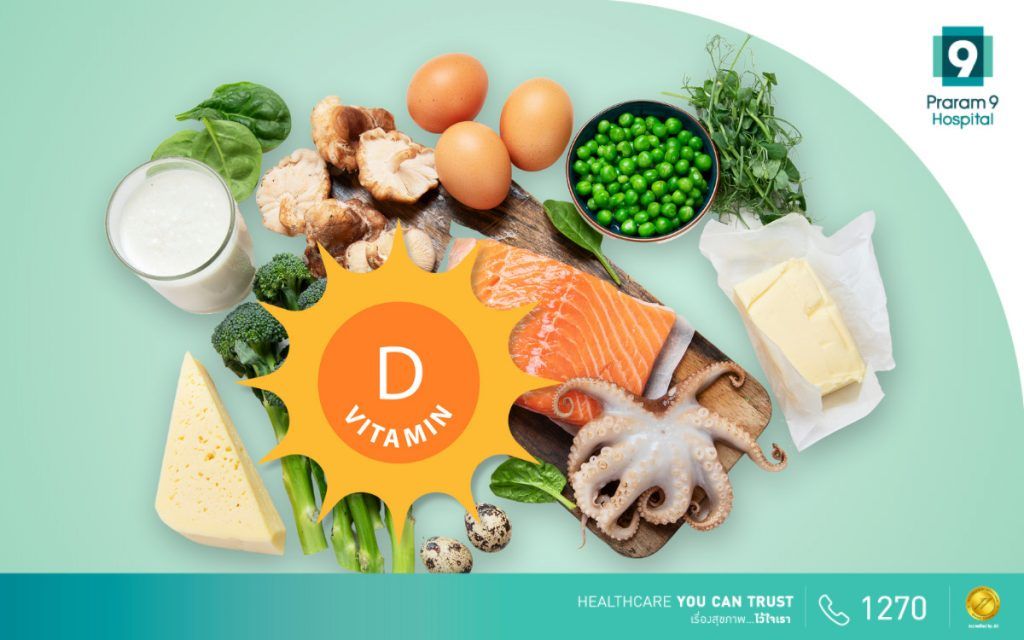Health Articles
Knowledge
Fear of the Sun? It Could Be Putting You at Risk for “Osteoporosis”

When people thinking of Thailand, many picture the sun, and just imaging it can make you want to grab an umbrella. But did you know that sunlight is more important to Thais than you might think? The gentle sunlight of the early morning and late afternoon not only warms the body but also helps produce vitamin D, which is crucial for strengthening bones, reducing the risk of osteoporosis.
Many people view sunlight as harmful, causing skin damage, wrinkles, and hyperpigmentation, leading them to overlook its benefits. Studies show that sunlight is essential for preventing osteoporosis and vitamin D deficiency. Exercising under soft sunlight in the morning allows the body to absorb vitamin D, which strengthens bones and reduces the risk of osteoporosis. In Thailand, 2.5-3% of the population of all genders and ages suffer from osteoporosis.
Dr. Peeraphong Sawatdipong, an orthopedic surgeon specializing in knee and hip replacements at Praram 9 Hospital, revealed that vitamin D deficiency is highly prevalent in Thailand, affecting 30-40% of patients. The primary cause is an excessive fear of sunlight, leading to fragile bones and a higher risk of fractures, particularly among the elderly and postmenopausal women. In reality, morning sunlight, when absorbed through the skin, significantly helps the body produce vitamin D, which strengthens bones and reduces the risk of osteoporosis later in life.
What is Vitamin D, and How Does It Relate to Osteoporosis?
Vitamin D is essential for the body. It helps absorb calcium, which is necessary for building and maintaining strong bones and preventing osteoporosis. Additionally, it offers various benefits, such as regulating blood sugar and blood pressure, reducing the risk of cardiovascular diseases, and alleviating stress and symptoms of depression.

Sources of Vitamin D
- Gentle sunlight (morning 6:00-9:00 and after 4:00 PM)
- Fatty fish like salmon, tuna, and mackerel
- Dark green leafy vegetables
- Yellow and orange fruits
- Liver
- Mushrooms
- Milk and cheese
- Egg yolks
The Increasing Risk of Osteoporosis in Thailand
If Thais continue to lack vitamin D, their bones will become weaker and more fragile. Typically, the body builds strong bone cells until age 30, after which bone density gradually declines. By age 60, or during menopause for women, bones become fragile and more increasingly prone to fractures. It’s estimated that by 2025, there will be over 30,000 cases of hip fractures in Thailand annually, increasing by 2% each year. In the next 25 years, this number could rise to 50,000 cases per year, with women being twice as likely as men to suffer fractures.
Osteoporosis: A Decades-Long Accumulation
Osteoporosis is often referred to as a silent disease, as symptoms often go unnoticed until a fracture occurs. Dr. Peeraphong explained that research over the past 10-20 years has shown that fractures and fragility in the elderly and postmenopausal women result from decades of bone mass deterioration. Osteoporosis is caused by the continuous breakdown of bone tissue, leading to decreased bone mass and increased fragility, making bones prone to deformity and fractures.
How Does the Balance Between Bone-Building and Bone-Breaking Cells Lead to Osteoporosis?
The body naturally balances bone-building cells and bone-breaking cells to maintain bone strength. Bone-building cells use calcium absorbed by the body to strengthen bones, while bone-breaking cells remove damaged or aged bone tissue. However, when bone tissue deteriorates due to injury or aging, bone-breaking cells dominate, weakening bones.
Conclusion
Osteoporosis is becoming increasingly common in Thailand, primarily due to vitamin D deficiency resulting from inadequate sunlight exposure, especially in the morning and evening. This deficiency results in fragile bones, particularly among the elderly and postmenopausal women, increasing the risk of fractures. Vitamin D plays a vital role in bone health by helping the body produce the necessary vitamin for bone strength and osteoporosis prevention.
Preventing osteoporosis is simple: spend time under gentle sunlight in the morning and evening, and consume foods rich in vitamin D.
Osteoporosis is a silent disease that develops over many years. often without symptoms until a fracture occurs. Once a fracture happens, bones become brittle and are more prone to further injuries. Severe fractures, such as a hip fracture, or a fall involving critical areas, can lead to disability or even death. Therefore, it is crucial to prioritize bone health early to prevent this condition in the future.
About the Author







